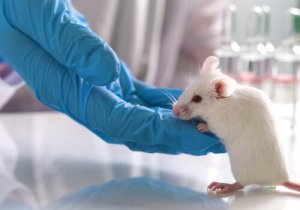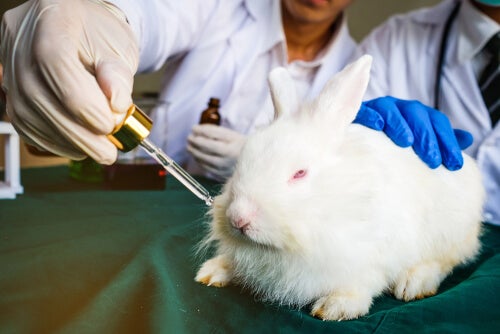What's the Deal with Animal Testing?

Animal testing in scientific research has a long history and still remains a common practice in scientific research. Approximately 115 million animals are used each year for these purposes. However, many people are against it.
Even in ancient times, animal testing was common. In the third century B.C., Alexandrian doctors performed experiments on both alive and dead animals. However, during the fifteenth century in Italy, modern experimentation really began. Scientists used live animals, especially dogs and pigs, to show the different functions of body parts.
In the 18th century, you can look to the work of Albrecht von Haller, who used almost 200 animals to prove sensitivity in living tissues. The foundation of Haller’s work was that the animals felt pain. He demonstrated this by measuring the reactions to various painful stimuli.
Haller was the first person to apologize for inflicting pain on animals. It’s an example that shows a new sense of responsibility that can be found in several publications from that century.
Now that you’ve learned about some of the history, take a look at the arguments used by those who stand in favor and against this method of study.

Arguments in favor of animal testing
Animal research has been helpful in almost every medical discovery of the 20th century. In fact, almost all Nobel Prize winners in physiology and medicine since 1901 have based their studies on data obtained from animal experiments.
In addition, human beings are very similar to other animals. We have the same organs and suffer similar diseases such as cancer, influenza, tuberculosis, and asthma. In this sense, non-animal methods, although vital to rounding out the information, can’t replace the use of animals.
Modern surgical techniques (hip replacement, heart transplants, blood transfusions, etc.) and scan techniques (CT and TM) were also perfected in animal experiments.
Arguments against animal testing
On the other hand, it’s unethical to doom the lives of beings who feel to a laboratory cage and cause them pain and fear. Using innovative techniques, scientists have been able to develop research methods without animals, such as in vitro technologies, bacterial cultures, and human patient simulators, for example. So why not continue to focus on developing these advances?
In addition, most animal experiments don’t have biomedical purposes. In other words, they don’t seek to improve human health. Organizations perform these experiments to test cosmetics or household products, or for military research or environmental impact tests.
The scientific value of biomedical experimentation with animals is much lower than many people think. This has many implications, for example:
- Humans who participate in the trials and those who later consume the products or medicines once they’re marketed continue to be exposed to damage that might not have been detected in animal experiments. As it turns out, our human bodies aren’t as similar as experts previously believed.
- This can prevent the development of beneficial treatment for humans even if it had a harmful effect on other animals.

What are the positions of other countries?
Most developed countries have laws to minimize the use of laboratory animals and minimize their pain. The European Union has one of the strictest laws in the world, which covers all vertebrates and cephalopods and includes both criteria for the care of animals and for the facilities involved.
In the United States, Federal law doesn’t mention mice, rats, birds, or fish, which account for 95% of animals used in laboratories. These species are, however, contemplated in other non-federal regulations. Other countries have regulations on the subject as well. In Canada, animal testing regulation is the responsibility of provincial governments. China, for its part, passed the first national law on the welfare of laboratory animals in 2006.
Perhaps the most demanding regulation in the world is the United Kingdom’s. England requires a cost-benefit analysis to authorize animal experiments, in addition to customizing licenses for those who conduct the tests.
Animal testing in scientific research has a long history and still remains a common practice in scientific research. Approximately 115 million animals are used each year for these purposes. However, many people are against it.
Even in ancient times, animal testing was common. In the third century B.C., Alexandrian doctors performed experiments on both alive and dead animals. However, during the fifteenth century in Italy, modern experimentation really began. Scientists used live animals, especially dogs and pigs, to show the different functions of body parts.
In the 18th century, you can look to the work of Albrecht von Haller, who used almost 200 animals to prove sensitivity in living tissues. The foundation of Haller’s work was that the animals felt pain. He demonstrated this by measuring the reactions to various painful stimuli.
Haller was the first person to apologize for inflicting pain on animals. It’s an example that shows a new sense of responsibility that can be found in several publications from that century.
Now that you’ve learned about some of the history, take a look at the arguments used by those who stand in favor and against this method of study.

Arguments in favor of animal testing
Animal research has been helpful in almost every medical discovery of the 20th century. In fact, almost all Nobel Prize winners in physiology and medicine since 1901 have based their studies on data obtained from animal experiments.
In addition, human beings are very similar to other animals. We have the same organs and suffer similar diseases such as cancer, influenza, tuberculosis, and asthma. In this sense, non-animal methods, although vital to rounding out the information, can’t replace the use of animals.
Modern surgical techniques (hip replacement, heart transplants, blood transfusions, etc.) and scan techniques (CT and TM) were also perfected in animal experiments.
Arguments against animal testing
On the other hand, it’s unethical to doom the lives of beings who feel to a laboratory cage and cause them pain and fear. Using innovative techniques, scientists have been able to develop research methods without animals, such as in vitro technologies, bacterial cultures, and human patient simulators, for example. So why not continue to focus on developing these advances?
In addition, most animal experiments don’t have biomedical purposes. In other words, they don’t seek to improve human health. Organizations perform these experiments to test cosmetics or household products, or for military research or environmental impact tests.
The scientific value of biomedical experimentation with animals is much lower than many people think. This has many implications, for example:
- Humans who participate in the trials and those who later consume the products or medicines once they’re marketed continue to be exposed to damage that might not have been detected in animal experiments. As it turns out, our human bodies aren’t as similar as experts previously believed.
- This can prevent the development of beneficial treatment for humans even if it had a harmful effect on other animals.

What are the positions of other countries?
Most developed countries have laws to minimize the use of laboratory animals and minimize their pain. The European Union has one of the strictest laws in the world, which covers all vertebrates and cephalopods and includes both criteria for the care of animals and for the facilities involved.
In the United States, Federal law doesn’t mention mice, rats, birds, or fish, which account for 95% of animals used in laboratories. These species are, however, contemplated in other non-federal regulations. Other countries have regulations on the subject as well. In Canada, animal testing regulation is the responsibility of provincial governments. China, for its part, passed the first national law on the welfare of laboratory animals in 2006.
Perhaps the most demanding regulation in the world is the United Kingdom’s. England requires a cost-benefit analysis to authorize animal experiments, in addition to customizing licenses for those who conduct the tests.
All cited sources were thoroughly reviewed by our team to ensure their quality, reliability, currency, and validity. The bibliography of this article was considered reliable and of academic or scientific accuracy.
- Cultura científica, https://culturacientifica.com/2015/07/14/experimentacion-animal-i/
- El diario, https://www.eldiario.es/caballodenietzsche/justificable-experimentacion-animal_6_602699753.html
- Universidad Complutense de Madrid, https://www.ucm.es/investigacionanimal/que-circunstancias-justifican-el-dolor-y-sufrimiento-de-los-animales-en-un-experimento
This text is provided for informational purposes only and does not replace consultation with a professional. If in doubt, consult your specialist.







